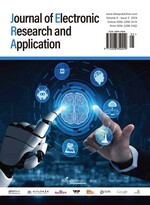Abstract
This study constructs an integrated model of user experience in smart home applications (apps) to deeply explore the impact of cognitive dissonance on users’ emotional responses, subsequent behaviors, and experiential outcomes. The research emphasizes the importance of addressing emotional management in the design and development of smart home apps. The findings indicate that emotional response plays a critical mediating role in the user experience of these apps, offering new insights for further optimization. By understanding users’ emotional reactions and behavioral patterns under cognitive dissonance, developers can more effectively improve interface design and enhance the overall user experience.
References
Chen L, Chu C, Zhao P, et al., 2021, The Design and Implementation of Smart Home Management Unit Software System. Home Appliance Science and Technology, 2021(2): 84–88.
Liu Z, Wang J, Chen C, et al., 2024, An Empirical Study on User Interface Display Defect Detection in Mobile Applications. Journal of Software, 2024: 1–25. https://doi.org/10.13328/j.cnki.jos.007043
Norman DA, 2004, Emotional Design: Why We Love (or Hate) Everyday Things. Civitas Books, Atlanta.
Albert B, Tullis T, 2022, Measuring the User Experience: Collecting, Analyzing, and Presenting UX Metrics. Morgan Kaufmann Publishers, Massachusetts.
Csikszentmihalyi M, 1990, Flow: The Psychology of Optimal Experience. Harper and Row Publishers, New York.
Alam MR, Reaz MBI, Ali MAM, 2012, A Review of Smart Homes—Past, Present, and Future. IEEE Transactions on Systems, Man, and Cybernetics - Part C: Applications and Reviews, 42(6): 1190–1203. https://doi.org/10.1109/TSMCC.2012.2189204
Festinger L, 1957, A Theory of Cognitive Dissonance. Row, Peterson and Company, New York.
Liu Q, Huang Q, Yuan Q, 2020, Cognitive Dissonance Theory and its Application and Prospect in Information System Research. Modern Information, 40(6): 154–162.
O’Connor A, Morvan C, 2017, An Analysis of Leon Festinger’s A Theory of Cognitive Dissonance. Macat Library, London. https://doi.org/10.4324/9781912282432
Ha QA, Chen JV, Nguyen THT, 2021, Continuance Use of Enterprise Social Network Sites as Knowledge Sharing Platform: Perspectives of Tasks-Technology Fit and Expectation Disconfirmation Theory. International Journal of Knowledge Management Studies, 12(4): 429. https://doi.org/10.1504/IJKMS.2021.118349
Park I, Cho J, Rao HR, 2015, The Dynamics of Pre- and Post-Purchase Service and Consumer Evaluation of Online Retailers: A Comparative Analysis of Dissonance and Disconfirmation Models. Decision Sciences, 46(6): 1109–1140. https://doi.org/10.1111/deci.12176
Mahlke S, 2005, An Integrative Model on Web User Experience. 2005: 251–254.
Aranyi G, Schaik PV, 2015, Modeling User Experience with News Websites. Journal of the Association for Information Science and Technology, 66(12): 2471–2493. https://doi.org/10.1002/asi.23348
Thüring M, Mahlke S, 2007, Usability, Aesthetics and Emotions in Human–Technology Interaction. International Journal of Psychology, 42(4): 253–264. https://doi.org/10.1080/00207590701396674
Nalik K, Kciuk M, 2024, Comparison of 32-bit Processors with Wi-Fi Modules as Endpoints in IoT Systems. SSRN. https://doi.org/10.2139/ssrn.4765252
Ali OKM, Altamer BR, Alsoufi MS, et al., 2024, Design and Implement a Sustainable Wireless Smart Home Based on IoT. International Conference on Intelligent and Smart Computation (ICIASC-2023), AIP Conf. Proc. 3072: 050010. https://doi.org/10.1063/5.0198730
Ashraf M, Ahmad J, Hamyon AA, et al., 2020, Effects of Post-Adoption Beliefs on Customers’ Online Product Recommendation Continuous Usage: An Extended Expectation-Confirmation Model. Cogent Business & Management, 7(1): 1735693. https://doi.org/10.1080/23311975.2020.1735693
Park E, 2020, User Acceptance of Smart Wearable Devices: An Expectation-Confirmation Model Approach. Telematics and Informatics, 47: 101318. https://doi.org/10.1016/j.tele.2019.101318
Marikyan D, Papagiannidis S, Alamanos E, 2020, Cognitive Dissonance in Technology Adoption: A Study of Smart Home Users. Information Systems Frontiers, 25(3): 1101–1123. https://doi.org/10.1007/s10796-020-10042-3
Szajna B, Scamell RW, 1993, The Effects of Information System User Expectations on Their Performance and Perceptions. MIS Quarterly, 17(4): 493–516. https://doi.org/10.2307/249589
Habib A, Alsmadi D, Prybutok VR, 2020, Factors that Determine Residents’ Acceptance of Smart City Technologies. Behaviour & Information Technology, 39(6): 610–623. https://doi.org/10.1080/0144929X.2019.1685595
Checcucci E, Piramide F, Cillis SD, et al., 2023, Health Information Technology Usability Evaluation Scale (Health-ITUES) and User-Experience Questionnaire (UEQ) for 3D Intraoperative Cognitive Navigation (ICON3DTM) System for Urological Procedures. Medicina, 59(3): 624. https://doi.org/10.3390/medicina59030624
Yu D, Luan Y, Wu C, et al., 2023, Research on User Experience of the Video Game Difficulty Based on Flow Theory and fNIRS. Behaviour & Information Technology, 42(6): 789–805. https://doi.org/10.1080/0144929X.2022.2043442
